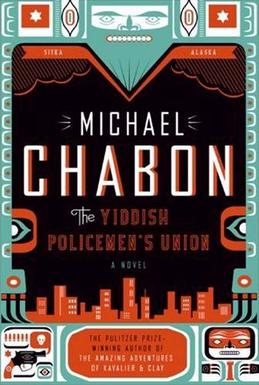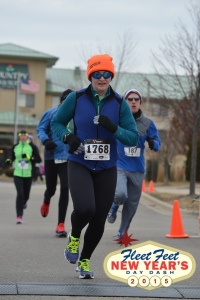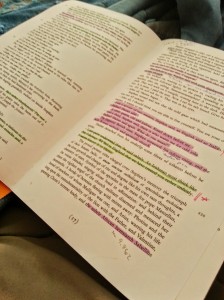Note to readers: I wrote most of this review whilst sitting in B’s room in the outpatient surgery clinic, waiting for his surgery to be over. So if it seems for whatever reason to be more than unusually disjointed, that’s why. He’s fine, by the way, and recovering well.–Ed.
Tabor, James M. Blind Descent: The Quest to Discover the Deepest Cave on Earth. New York: Random House, 2010. 978-1-4000-6767-1.
There is a whole genre of books about people accomplishing difficult feats in incredibly dangerous environments. Jon Krakauer, for example, has made a living writing this kind of book for some time—first Into the Wild, about an independent or insane (depending on your point of view) kid from a wealthy East Coast family who starves to death in the Alaskan wilderness, and then Into Thin Air, about a disaster on Mt. Everest (one he personally witnessed). In some of the book, the feat accomplished is more subtle; a good example is Peter Matthiessen’s[1] masterful The Snow Leopard, the diary of a trek he made through Nepal with the naturalist George Schaller. And then there’s Blind Descent, James M. Tabor’s book of two speleologists racing to find the deepest cave.

Caving—the type these guys are into, at least—is basically a crazy occupation; I think if you’re not already into it when you start the book, you’re not going to be tempted to pick it up. I have walked through a few caves that were fitted out for tourists, but real caving involves all the fun (and dangers) of rock climbing and scuba diving, except done in pitch black and often with freezing cold water running over you, with wind gusts as loud as a 747 rushing past. Sound like fun? Caving is cold, wet, dirty, hard, exhausting work, and the only thing that relieves the monotony is that cavers sometimes go crazy and get what’s called “the Rapture,” which is like a panic attack except with hallucinations and other terrible things. Also, if you get stuck on Mt. Everest, sometimes they can land a helicopter and bring you down. If you make a mistake and hurt yourself in a cave, you’re pretty much fucked unless your friends can carry you back to the surface—a journey that can involve vertical climbs (or if you’re incapacitated, hoists) of 500 feet or more. And that’s not even going into cave diving, which is basically a quick way to wish for death, as far as I can tell. Seriously, about half the named cave divers in this book died.
The book chronicles several expeditions launched by two men, American Bill (William C.) Stone and Ukrainian Alexander Klimchouk. Stone works in a group of caves in Oaxaca, Mexico called Cheve (Chay-vay, not like the cheese; a New Yorker article spells it as Chevé), while Klimchouk works in Krubera Cave in the Arabika Massif in the Western Caucasus, located in what is either the country of Abkhazia or the Abkhazia region of Georgia.[2] In the book, their expeditions are set up as a sort of race to the bottom to discover the deepest cave.
Here I have to pause. In order to draw the reader in, Tabor to some extent skips explaining a lot of his terminology. By “deepest cave,” he doesn’t mean the deepest point on Earth (which would be in the Marianas Trench) or even the deepest point on land (which could be, I suppose, the bottom of the TauTona Mine in Carletonville, South Africa or the Kola superdeep borehole, or potentially the valley under Byrd Glacier[3]), but the deepest depth reachable when descending from the mouth of the cave. To put it another way, Krubera Cave’s entrance is in the mountains, approximately 6,500 feet up (159), so when these cavers descend 7,208 (plus or minus 66) feet, they’re not going 7,208 +/- 66 feet below sea level. Tabor also glosses over what the actual science being done here is—although both Stone and Klimchouk are PhD-holding scientists, it’s unclear what either of them is hoping to get out of the caves beyond just messing around in caves for some reason. Stone does develop technology for use in caves (for example, a rebreather for diving, and a sonar machine for mapping), but he does that to support his caving habit and make caving better rather than doing some sort of cave-based research.
Although I think the book has a number of deficiencies, I first want to say that the writing is good and clear and the book is very engaging. For someone with no knowledge of caving, mountaineering, or diving, I understood the objectives each man was trying to achieve and was able to follow—with excitement—the progress through each cave. The major issues were these:
- Women: Although there were women along on both expeditions, Tabor is largely uninterested in them and women in caving generally unless they are 1) sleeping with Bill Stone, 2) the discoverer of Cheve Cave (unavoidable), or 3) I can’t think of a third category. Two of Stone’s girlfriends are involved in the expeditions he leads, and both are mostly described as beautiful—although Tabor is forced to admit that both are experienced cavers, he seems surprised when they actually pitch in and take part in the expeditions. Stone’s girlfriends’ appearances are mentioned both the first time they appear, and then again if they come along on a subsequent expedition, as though we might have forgotten that they are “beautiful,” “tall,” “striking,” etc. Another woman, involved in the Ukrainian expedition, is described as “as strong and brave as she was pretty” (231). Spare me. Needless to say, the men’s physical appearances aren’t really touched on, at least not in such obnoxious detail. In the American expeditions, the presence of women seems to be a point of friction between the male members of the team, but Tabor is uninterested in exploring the roots of this sexism, or discussing at all the history of women in caving; he’s equally uninterested in exploring why the Ukrainian teams seemed to include more women and have fewer problems with sexism. His writing style, though striving for some type of objectivity, doesn’t ever escape from these issues—for example, he mentions a woman getting her hair caught in a rappel rack during a descent—“what every female (and long-haired male) dreaded” (218). Why not just say “what every long-haired caver fears”? Does every female caver wearher hair long?
- Communism versus capitalism. Of course, Klimchouk grew up and learned to cave in the USSR, and his view of caving as a cooperative venture between a lot of highly trained people, each of whom takes on specific responsibilities, is in many respects radically different from Bill Stone’s strong-leader-tells-people-what-to-do mindset. Interestingly, Klimchouk’s expeditions seem to be more comfortable in some respects for the cavers (e.g., atmosphere—no sex in the camps; better rations) as well as safer (lots of people die on Stone’s trips, though Tabor absolves Stone of all the deaths). But rather than exploring the complexities of this difference, Tabor seems inherently suspicious of communism in a weirdly 1950s Better Dead Than Red sort of way (maybe I’ve just been hanging around far-leftist academics/radicals for too long?) and is uninterested in the political differences between leadership styles.
- Stone versus Klimchouk. While the book is framed in terms of two caves, the book is really written in terms of Stone versus Klimchouk, with the first half serving as a biography of Stone and an account of several expeditions to Cheve and the second half serving as a biography/account of Klimchouk and his expeditions. Except—this is kind of weird, and I’ll warn for a spoiler—while Klimchouk wins, he gets barely ten chapters to himself, plus a few more in the “Game Over” section, while the first thirty-one chapters cover Stone and Cheve, plus more in the “Game Over” section.
- A few off-color jokes in the endnotes. To be honest I don’t really care enough to list them here. They were off-color, though.
- As, I assume, part of the aforementioned attempt to reduce the science to make everything more readable, many questions about caves, caving, and the rules of the competition are left unspoken and thus confusing. For example, Stone’s group proved via a dye test that Cheve is much longer than its current terminus would suggest—the river that flows into its mouth has an outflow several miles and 8,500 feet down. If the cave went all the way through the distance betweeen the entrances and exits, Cheve would be the deepest cave. Yet clearly the water goes all the way through—why does the cave have to be traverseable by humans in order to take that distinction? Krubera has been dug out and widened in many places by its explorers—why is this legal? (Of course most of the time they’re removing breakdown—piles of rubble left by water—but I’m still curious what the stance on digging is.)[4] Why is cave diving so dangerous? Why do divers have to physically hold on to a line with one hand rather than clipping onto it like a mountaineer?
- Somewhat annoyingly, while there is a section of photographs, none of them are actually referenced in the text (as someone in publishing, I see this as poor form, though it does happen). Further, while there are lots of attempts to draw a picture using words of a specific cave feature, a photograph would have been instructive. Maddeningly, in a few spots photographs are actually described, but not reprinted.
- Finally, there is the weird desire for completion. As understandable as it is, I have to say that it seems a little bit weird to recount the finding of Krubera’s bottom in 2004 as “game over, end of the line, the last great terrestrial discovery has been made.” There are a couple of reasons for this—for one, that actually wasn’t the lowest point in Krubera—a diver has since pushed the bottom down by another 52 meters (although this happened after the book’s publication, so I don’t blame Tabor for missing it). But that’s the thing—as Bilger puts it in the article I linked to earlier, Everest was Everest before Norgay and Hillary got to the top of it, but you don’t really know how deep a cave is until you’ve gone all the way to its bottom. So not only can there deeper points in the same cave, there could easily be deeper caves elsewhere in the world—something Bilger points out, but Tabor seems loathe to admit. While I understand the desire to tie things up, this seems factually inaccurate.
So there are those things. On the whole, though, while I found them annoying and perplexing—and while I would have made different choices in many places had I been writing/editing the book, I found it, as I said, largely engaging, easy to read, and informative on at least the main points of caves, diving, and the bizarre phenomenon known as supercaves.
[1] I am saddened to see, writing this, that Peter Matthiessen died almost a year ago, on 5 April 2014. If you are looking for a good read, I heartily recommend The Snow Leopard. He wrote a lot of other books, too.
[2] Tabor seems uncommitted on this point, but in fact there’s a lot of geopolitical mess going on in this region—Abkhazia wants to be a country of its own, but it’s recognized by only a few other countries, so it exists in a weird sort of limbo at the moment.
[3] Unlike determining the highest point on Earth, these lowest points seem to have a lot of asterisks: the Kola superdeep borehole is the deepest, but it’s man-made and not human accessible—I think the Kola superdeep borehole was specifically conceived as a project to see how deep a hole could be drilled. The TauTona Mine is human-accessible but, again, man-made. The sub-glacier spot is covered with ice (for a while longer, anyway). There are also caves that are bigger than either Cheve or Krubera (such as Sơn Đoòng Cave in Viet Nam, although Wikipedia doesn’t explain in what respect it is the biggest). So as with so many things, it depends on how you’re asking the questions.
By the way—the Wikipedia page for the Kola superdeep borehole gives in two paragraphs more scientific explanation for why anyone should care about going deep into caves/drilling a deep hole in the ground than Tabor gives in his entire book.
[4] This question and some others that have come up for me were answered at least partially in the New Yorker article linked to earlier: Bilger, Burkhard. “In Deep: The Dark and Dangerous World of Extreme Cavers.” New Yorker, 21 April 2014. http://www.newyorker.com/magazine/2014/04/21/in-deep-2.










